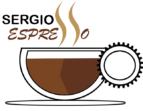Introduction
In the competitive landscape of FAANG interviews for aspiring product managers, it is imperative to approach interview questions utilizing structured frameworks. This blog post delves into the product interview question, “How would you design a hoverboard for youngsters? How would you determine its market-fit?” Understanding how to navigate this question can showcase one’s ability to think creatively while also keeping practical considerations in mind.
Detailed Guide on Framework Application
To tackle this question, we will be applying the CIRCLES Method™, a popular framework outlined in ‘Decode and Conquer: Answers to Product Management Interviews.’
a. Pick a framework among the most common ones in product interviews
We have selected the CIRCLES Method™, which stands for Comprehend, Identify the Customer, Report the Customer’s Needs, Cut through prioritization, List Solutions, Evaluate trade-offs, and Summarize Recommendations.
b. Step-by-step guide on how to apply the frameworks
- Comprehend: Start by clarifying the question and ensuring you understand precisely what is being asked. For this question, we need to consider the design and safety specific to youngsters and determine how to evaluate market-fit.
- Identify the Customer: Define who the customer is — in this case, it is youngsters, most likely falling within the age range of 8-16 years old. Consider also the parents or guardians as secondary customers who will make the purchase decision.
- Report the Customer’s Needs: Understand the needs, desires, and pain points of the target demographic. Youngsters are looking for fun, trendy, and easy-to-use hoverboards, while parents prioritize safety and value.
- Cut through prioritization: Rank the needs you’ve identified in order of importance. Safety might be at the top, followed by ease of use, affordability, and trendy design.
- List Solutions: Brainstorm solutions for the needs ranked. For instance, to address safety concerns, design a hoverboard with speed limits, integrated protective gear, and a sturdy build.
- Evaluate trade-offs: Consider the implications of your design choices, such as costs, regulatory implications, and user acceptability.
- Summarize Recommendations: Provide a compelling summary of your design proposal and market fit analysis, touching on the features and unique selling propositions of your product.
c. Include hypothetical examples to demonstrate how the frameworks can structure a compelling answer
Let’s hypothetically suggest a hoverboard called ‘HoverFun’ designed for youngsters. ‘HoverFun’ would have a top speed of 6 mph considering the age group, made from high-quality, durable materials, and come with removable safety handles. Additionally, we might explore an accompanying app that allows parents to track the hoverboard’s location and set usage limits.
d. Do add some facts checks to make sure your thinking is on the right ballpark
While we may not know the exact statistics, it’s logical to assume that the toy and electronic rideables market has been growing, suggesting that there’s potential for a well-designed hoverboard. Also, considering the general high attentiveness to children’s safety, putting a significant emphasis on protective features is a realistic priority.
e. More importantly, assume you are a candidate that does not know all the data points you can always access such as exact weight of a Boeing 777 but you can however approximate as an average human being would do
For example, while we may not know the exact manufacturing costs, we can infer that using high-quality materials and built-in safety features will incur a higher cost, but potentially justify a premium price point due to increased value to the customer—safety and reliability.
f. Provide tips on how to communicate effectively during the interview
- Be clear and articulate in expressing your thought process.
- Use concise statements to convey your ideas effectively.
- Engage with the interviewer by asking clarifying questions if needed.
- Demonstrate enthusiasm for the product concept you are presenting.
Conclusion
In conclusion, using a structured product design framework such as the CIRCLES Method™ can guide aspiring product managers in FAANG interviews towards presenting comprehensive and persuasive answers. By addressing the specific needs of a hoverboard designed for youngsters and considering market-fit, interviewees can showcase their ability to blend creativity with pragmatic business acumen. Remember to practice applying these frameworks in various scenarios to refine your interviewing skills.
